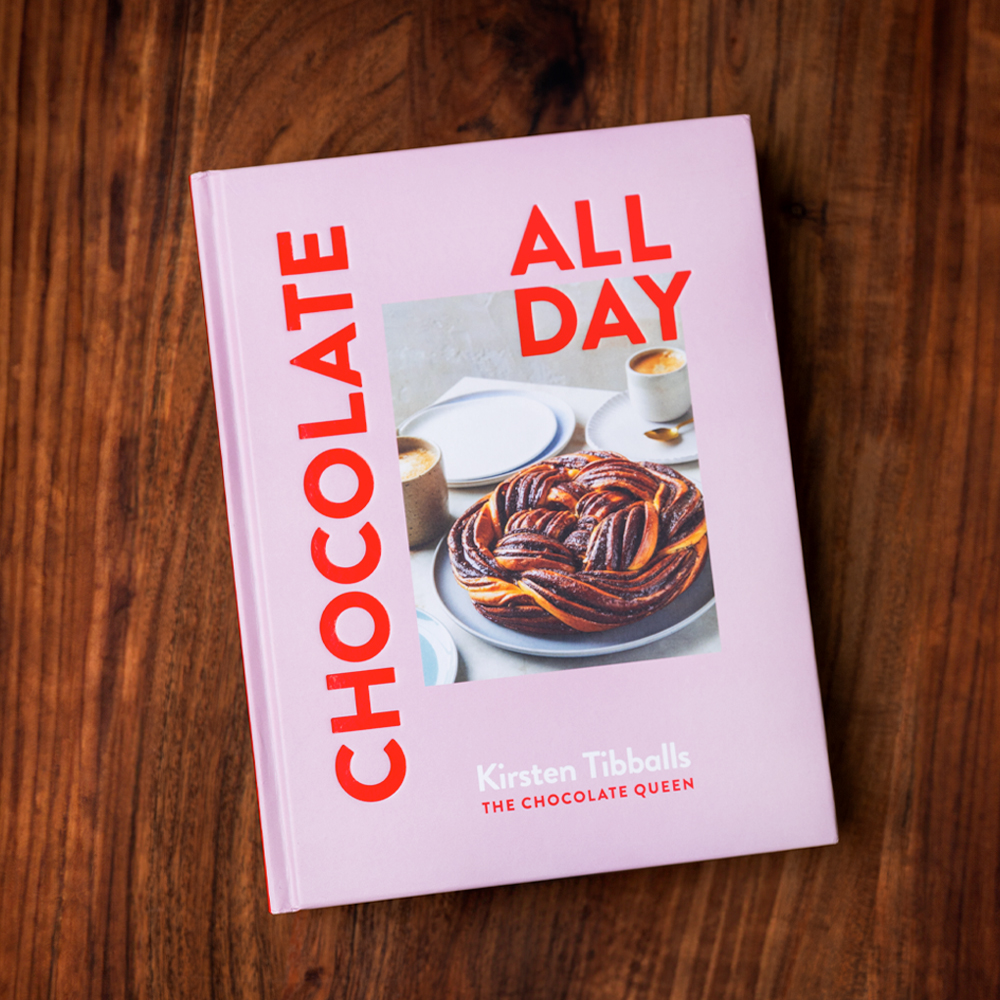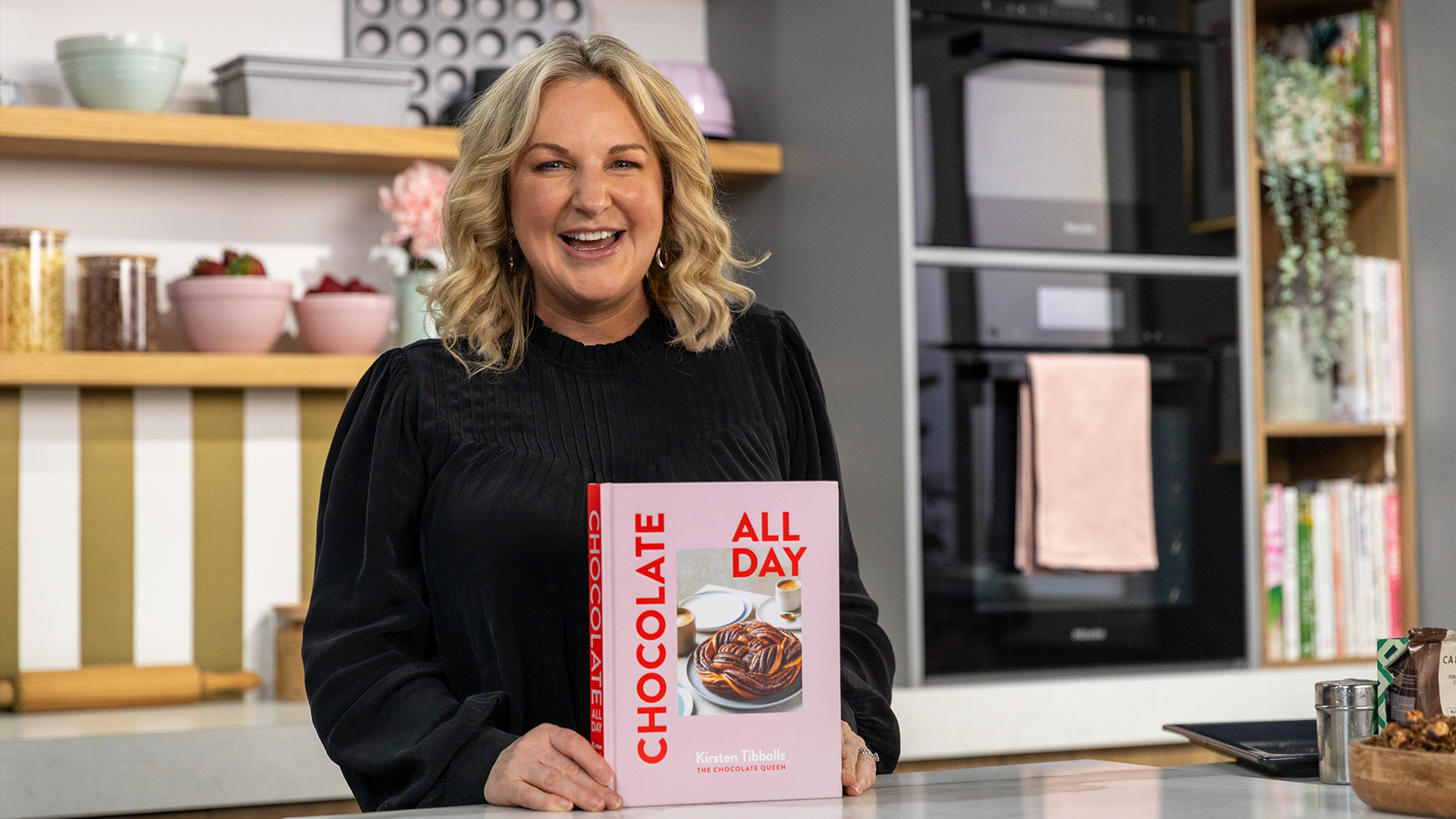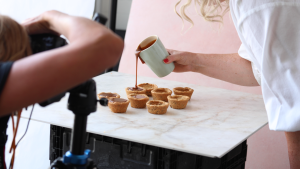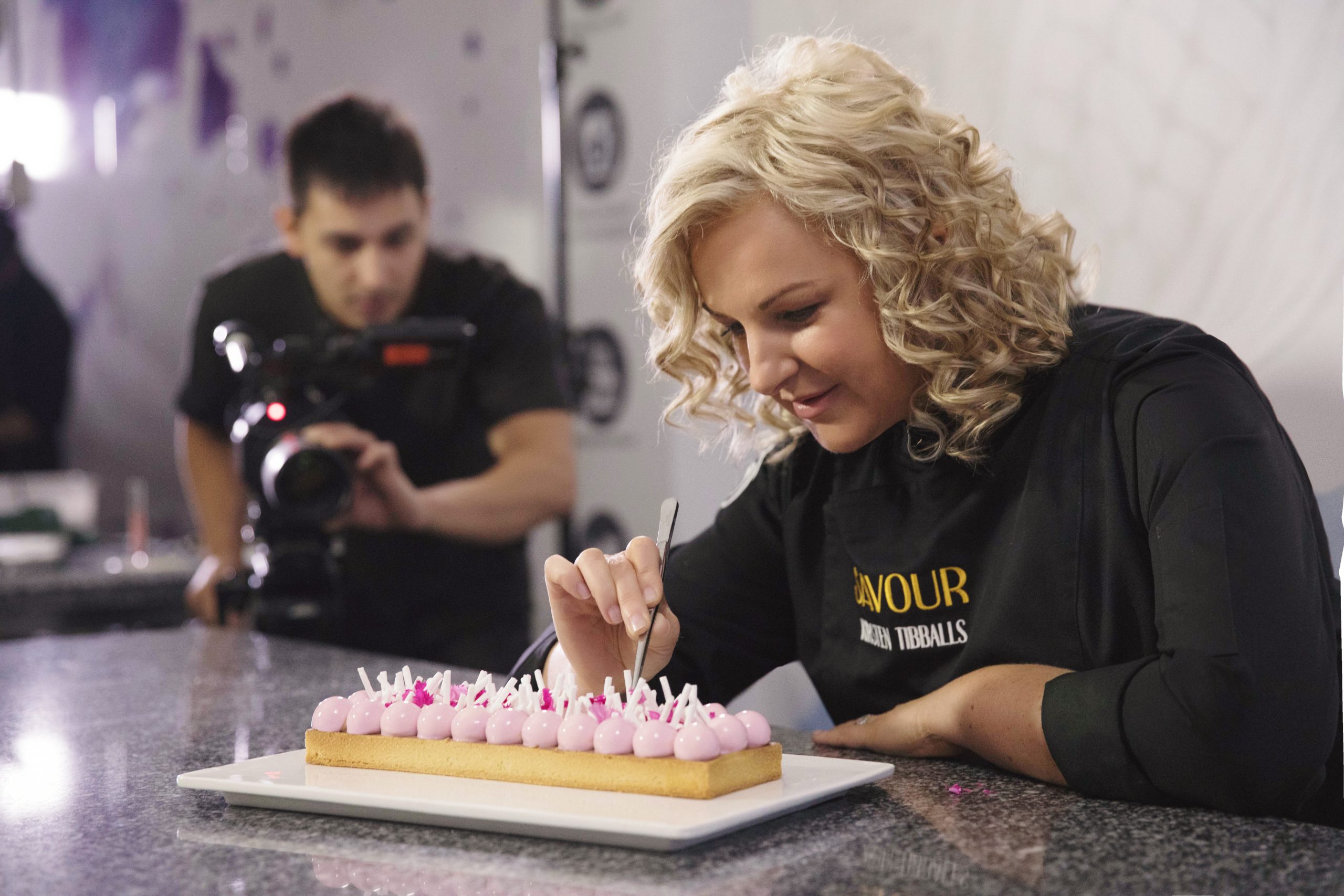How do you develop a cookbook? What does the process look like? And what are the key factors you need to consider?
There’s no better way to learn than through experience. I’ve been lucky enough to have authored 3 cookbooks – excitingly, my most recent, Chocolate All Day, was released last year!
So, with the process fresh in mind, I’m going to share some insights, personal experiences and must-know tips on creating a cookbook.
My Vision for Chocolate All Day:
I went into creating Chocolate All Day with 3 main goals in mind.
- To develop a cookbook that has recipes for every season and all occasions, which can be enjoyed any time of day – hence the title!
- To incorporate chocolate in every single recipe (of course!)
- To provide recipes with varying levels of difficulties – I’m talking recipes for absolute beginners, recipes for competent at-home bakers, and recipes for those wanting a delectable challenge.
Creating a Cookbook
Planning the Book
Planning is essential to success.
My initial considerations when beginning are:
- What is the concept for the cookbook?
- Who is the market audience? Is it at-home cooks or industry professionals?
Subsequent steps include:
- Write a list of recipes that tie in with the book concept.
- Begin to flesh out each recipe with ingredients.
- Sketch out visual representations of each recipe.
- Begin to test, test, test!
- Separate the recipes into chapters.
When creating a cookbook for at-home bakers, it’s important to keep in mind that using fewer ingredients and more accessible equipment will encourage more people to cook from your book.
Most at-home cookbooks contain 50-70 recipes. Smaller cookbooks may contain as few as 20 recipes.

When developing Chocolate All Day, I considered the various occasions and settings where a chocolate treat might be enjoyed – and we all know the answer is quite simple: anytime and everywhere! So, I compiled a list of indulgent recipes suitable for a plethora of different occasions. Seasonal holidays, afternoon tea, casual barbeques with friends, birthdays, and even lunchbox snacks.
Thorough Recipe Testing
Testing, testing, testing. I could say it a hundred times over.
Think about it, the reader invests money in purchasing a cookbook, buying ingredients, and spends precious time following instructions – they expect the recipes to work.
This is why it’s essential to test your recipes, not once, not twice, but as many times as needed to ensure the product is going to be perfect every time it’s recreated.
I thoroughly test all my recipes. It may surprise you, but some recipes are tested as many as 30 times before they’re finalised – and that’s just for 1 recipe!
When developing a cookbook for at-home cooks, I provide friends with packs of baking equipment, pre-weighed ingredients, and recipes to test in their home kitchens. They then give me feedback on:
- What worked well.
- What they liked about the recipes.
- If any aspect didn’t work well.
- If there were any parts of the method they didn’t understand.
These invaluable notes help me make any necessary changes, and further refine the recipes.
In short, while the process may seem lengthy, it’s crucial to ensure that your recipes work and are easy to follow. If they aren’t, the cookbook will receive negative reviews and consumers are very unlikely to buy another book if you were to publish one.
Recipe Writing
It is so, so important not to omit any information from your recipes. The information you provide in a cookbook contributes to the successful recreation of each dish and in turn, the success of your book.
So, no gatekeeping!
As chefs, we possess a wealth of knowledge about various techniques, ingredients, and practices. We often make the mistake of assuming that home-cooks recreating our recipes have the same knowledge – which may not always be the case. Therefore, providing clear, detailed explanations that are easy to follow is vital.
In my recently released cookbook, Chocolate All Day, I’ve included additional information for the reader. Including:
- ‘For Best Results’ – these helpful tips go beyond the basic method, ensuring a hassle-free and successful recipe.
- ‘Fix It’ – where possible, I’ve identified potential issues with a recipe and provided solutions. (For example, if you over-whip a ganache).
- ‘Next Level’ – these suggestions enhance the recipe with an extra ‘wow’ factor.
This additional information, proactive fixes, and creative suggestions provide significant added value to your cookbook.
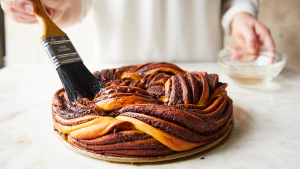
Working with an Editor
Despite our diligence in writing, an editor is essential in the creation of a cookbook.
The editor will ask questions throughout the editing process to clarify any unclear points. Ensuring your recipes are detailed and refined before sending them to the publisher will facilitate a smoother editing process.
Consistency is crucial.
For example, you may refer to a spatula as ‘a spatula’, ‘a silicon spatula’, or ‘a non-stick spatula’. While these terms refer to the same item, you must choose one and use it consistently throughout the entire cookbook.
These are the type of things that an editor will notice and amend.
Photography & Styling
A photographer and stylist collaborate to ensure that the images complement the book’s concept and aesthetics. It’s beneficial to have a mood board, which may sometimes be provided by the publisher, as it provides the stylist and photographer with guidance on the desired aesthetic.
Photography is an essential tool for showcasing your recipes. It allows your audience to visualise each product and imagine the possibilities of what they can recreate.
The stylist’s responsibilities include selecting and arranging crockery, cutlery, backgrounds, settings, and props to enhance the visual appeal of the images. Their role is to style the shoot in a way that encourages the audience to envision themselves preparing and serving the products. Ideally, your audience should look at the photos and think, ‘I could make that for Christmas’ or ‘for my next dinner party’.
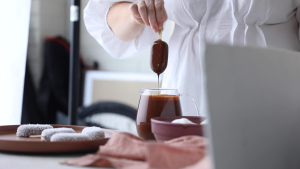
Photographers have different styles. Some work in a studio while others prefer natural light.
Off-site photography requires more work on the chef’s part. During each day of the shoot, you need to pack, transport, and set up:
- All the finished products.
- Any individual recipe steps that you’d like captured.
- All garnishes that need to be added to the recipe.
My first cookbook, Chocolate To Savour, was photographed in a studio-style setup at Savour. Whereas my 2 subsequent releases, Chocolate and Chocolate All Day, were photographed at Savour with natural light.
Personally, I prefer the photography of my cookbooks to be captured at Savour. It’s more convenient because I have all the prep ready to go in the kitchen on site. Not to mention, Savour gets wonderful natural light in the front of the retail shop.
Natural light gives a completely different look and feel than photographs taken in a studio set up with professional lights. Both can produce breathtaking images – it ultimately depends on personal preference.
Aesthetics of the Book
Related to photography, it’s important to consider the finish of the cookbook. Do you prefer glossy or matte images?
It’s a personal preference which may vary over time and with changing trends – which is evident in my 3 cookbook releases.
Chocolate To Savour (2012) – gloss finish
Chocolate (2016) – semi-gloss
Chocolate All Day (2023) – matte
Marketing & Distribution
My top tip for selling a cookbook is: Preparation.
It’s essential to promote the book and create excitement leading up to the launch. Let people know about the book and its availability for pre-order.
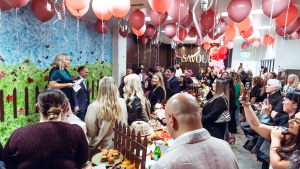
Regarding distribution, consider these key points:
- Wholesalers generally pay 60% less than the retail price.
- If you decide to distribute the book independently, ordering large quantities of the book at once – such as 1000 books or more – can be more cost-effective. This bulk order typically results in a lower price per book compared to ordering smaller quantities.
Final Words:
I understand the process can seem daunting, but there is plenty of time –try not to get overwhelmed.
- Break tasks down.
- Make lists.
- Establish a timeline with goals.
- Celebrate your progress.
Creating a cookbook requires passion and dedication, but the hard work and long hours are so, so worth it. You’ll understand once you hold the printed copy in your hot-little-hands!
What’s amazing (and mind-blowing!) is that a cookbook will last forever. It will be purchased, cherished, gifted, and continuously referenced.
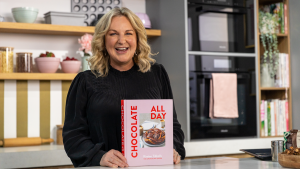
I poured so much love and passion into my recent cookbook, Chocolate All Day. I’m confident that when you flip through, you’ll agree it’s a fantastic book. Better yet, it’ll be confirmed once you start recreating the recipes.








